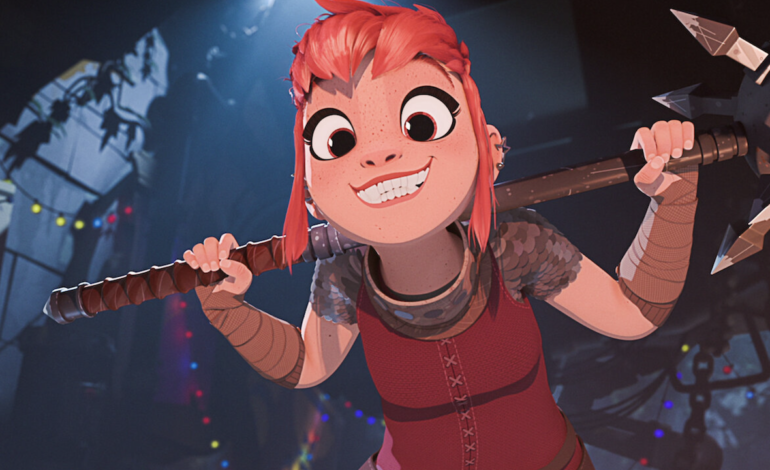

Though recent children’s animated films such as Luca (2021) and The Mitchells vs. The Machines (2021) have promoted acceptance and celebration of the LGBTQ+ community in film-wide analogies or vague mentions of characters’ sexualities, Nimona, the 2023 Netflix animated film, takes an important step forward in the inclusion of queer characters and narratives in children’s media. Not only does Nimona feature a prominent queer relationship between two male main characters, but it also provides a strong, thought-provoking analogy to the transgender/nonbinary experience throughout the entire film. This inclusion is done tastefully, making it digestible and understandable to young ages, while still dropping chill-inducing revelations about the queer experience to older viewers as well.
The film begins with a classic storybook-style introduction, telling the ancient story of a fantastical village and the beloved founder, Queen Gloreth, who fought off a vicious monster to protect the people. Now, 2000 years later, the village is a high-tech, highly-populated city, and underdog Ballister Boldheart (Riz Ahmed) is about to be knighted. But when an explosion springs from his sword, killing the beloved Queen Valerin and framing Boldheart for the murder, Boldheart flees. In hiding from the revenge-seeking Director and the grief-stricken Prince Ambrosius Goldenloin (Eugene Lee Yang), who happens to be Boldheart’s boyfriend, Boldheart tries to plan his way to freedom. It’s not until Nimona (Chloë Grace Moretz), a shape-shifting creature most often in the shape of a teenage girl, seeks him out in hopes of becoming his sidekick, that it seems like Boldheart really has a chance at proving his innocence and staying alive.
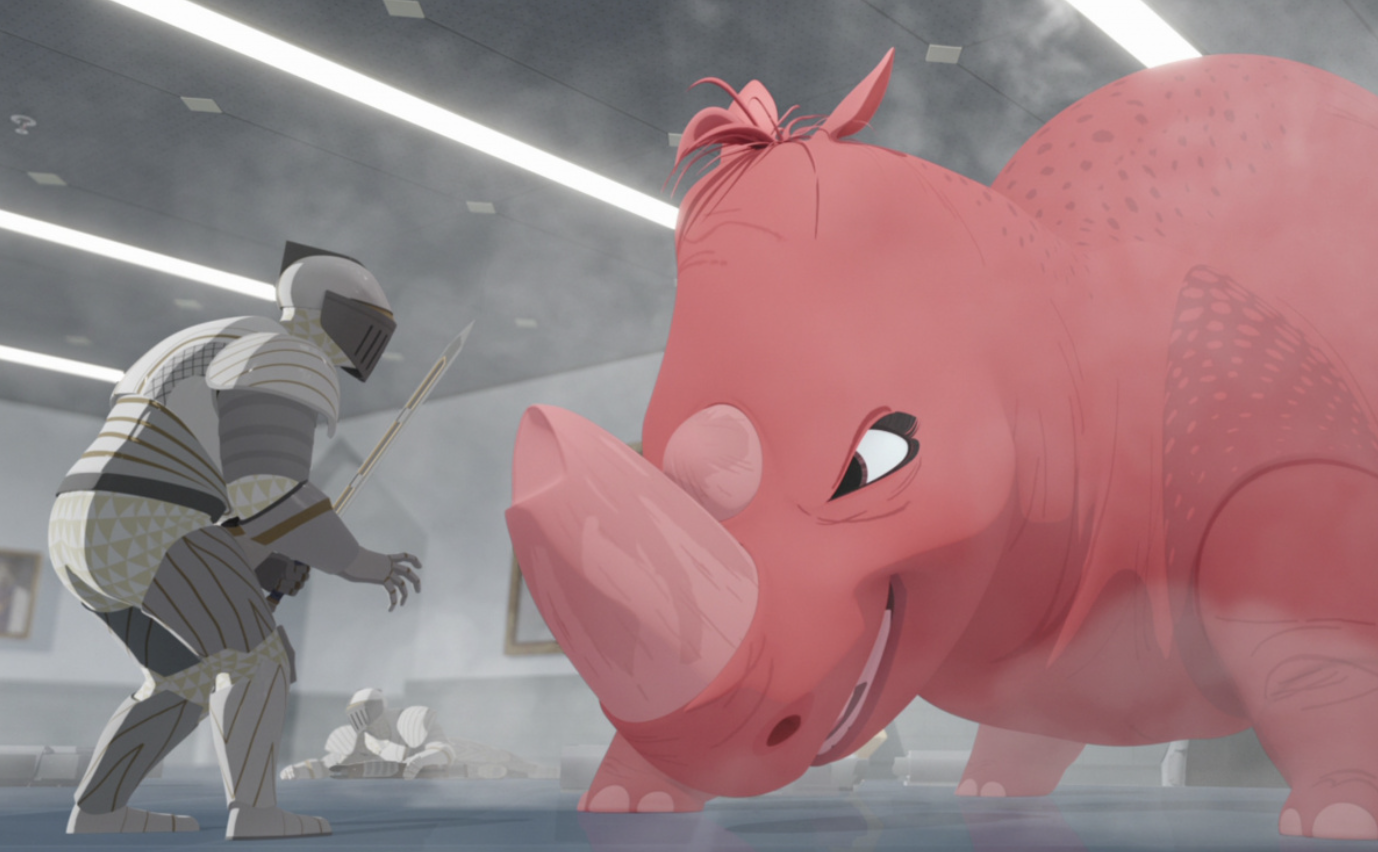

It is within Nimona’s ability to shapeshift that the larger analogy to the trans experience is born. Instead of a teenage girl with a superpower, Nimona is a constantly-shifting creature without one set identity. Through a conversation between her and Boldheart, it is clear that Boldheart has trouble understanding her fluid physical state and identity. Similar to nonbinary and gender-fluid people, this struggle for public understanding and acceptance is something that is unfortunately put on Nimona to explain. But with careful skill and wit, her character explains her identity in a way that children can understand, and is truly more illuminating to adult audiences than most media out there. Early in the film, when Nimona first explains her powers to Boldheart, Boldheart ignorantly instructs her, “Be your real self, as a girl.” Nimona responds calmly, “But I’m not a girl. I’m a shark,” and flashes her pearly white fangs as a reminder.
Originally a 2015 graphic novel, Nimona was created by ND Stevenson, a transgender graphic novelist who was able to explore and accept his own identity with help from Nimona and her world. Infused within the world of Nimona and her battles are words that many within the trans, nonbinary, and queer communities identify with and recall speaking before. A standout scene was another conversation between Boldheart and Nimona, in which she is prompted to explain her identity yet again. “I just think that it’d be easier if you were a girl,” Boldheart complains. Nimona bites back with the best line of the movie: “Easier to be a girl? You’re hilarious.”
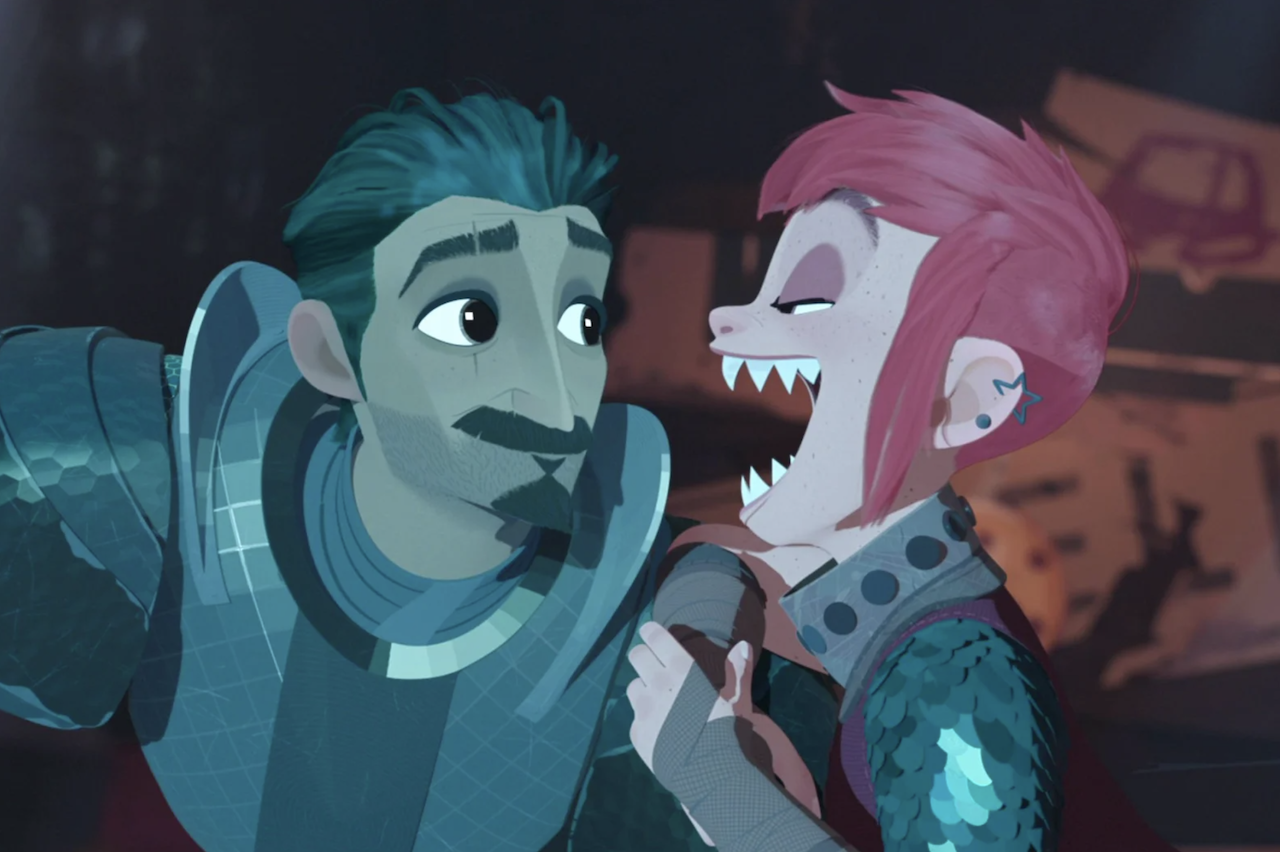

Nimona’s analogy also takes a critical stab at the societal acceptance of trans and queer people, especially targeting children’s negative views toward people with differences as a result of the way they are raised. Late in the film, after a young child aims a weapon at the shape-shifting Nimona out of fear, Nimona remarks, “Little kids. They grow up believing they can be a hero if they drive a sword into the heart of anything different. And I’m the monster?” This commentary is expanded upon later when the true backstory of Queen Gloreth and the monster she fought is revealed. More than a monster, a shapeshifter, or a murderous Director, the true villain in Nimona is intolerance.
Another special aspect of Nimona is the relationship between Boldheart and Nimona. Boldheart, older and battered by the world, paired with Nimona, younger and optimistic, present an unlikely duo with so much to learn from each other. Similar to other special cinematic relationships in children’s media such as Up (Carl and Russell), Boldheart and Nimona’s relationship presents a point of view to share with viewers both young and old. This presents a unique experience to parents and children watching together and promotes a greater sense of understanding between these two distinct roles: parents are encouraged to explore a greater sense of optimism and child-like joy, while children are reminded (especially after Nimona’s darkest hour at the end of Act Two) that though their elders may have faults, they are reliable in their times of need.
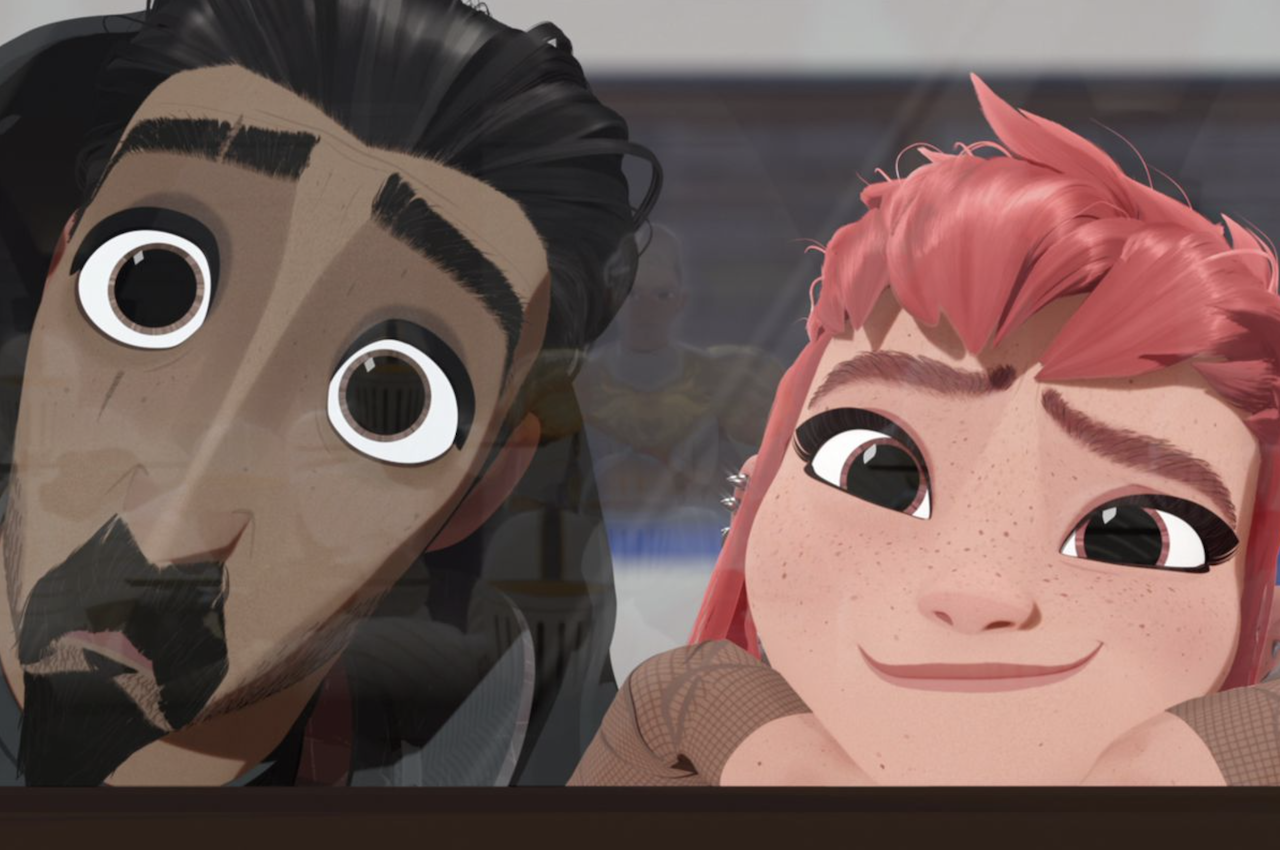

The visual style of Nimona is ridiculously fun, offering a fresh alternative to the overwhelming amount of hyper-realistic animation that Hollywood has been pumping out recently. The light, bright, and colorful aspects provide the aesthetics that any child would enjoy, but the style is made memorable by the dark colors and sharp edges, increasing the impact of these darker themes. In comparison to the film’s earlier, hyper-saturated pink and orange creatures, the darker form that Nimona takes on in the final action scene stands alone, and the story point is allowed the intensity it requires to make the point.
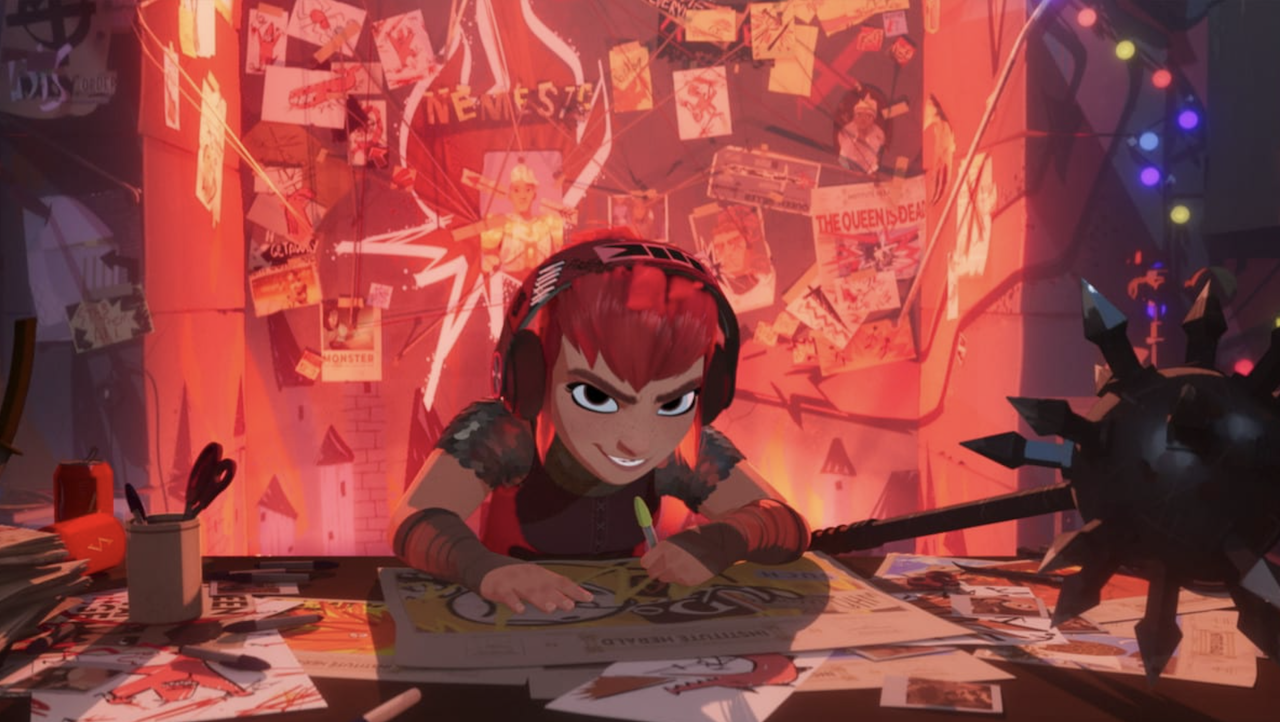

Nimona is an important film for children’s media because of its meaning and inclusion. Without the larger analogy and the featured relationship between Boldheart and Goldenloin, Nimona would be a sweet and creative film, but would ultimately get lost in the mass of Netflix content surrounding it. But because of the bold step that it takes toward a more inclusive and understanding future, starting with the most important audience (the next generation), Nimona is something to be noted and celebrated. One hopes that this is not a standalone film, but something we can look back on proudly as the first of its kind.
